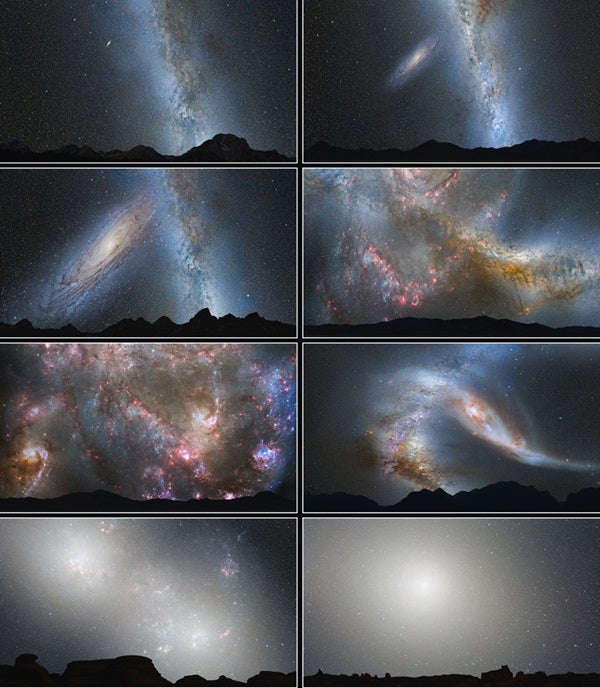As the Milky Way and Andromeda galaxies approach for their imminent merger, as shown in this simulation of the coming several billion years, star formation runs rampant and lights Earth’s night sky. Eventually, the two form one enormous elliptical galaxy.
NASA; ESA; Z. Levay and R. van der Marel, STScI; T. Hallas; and A. Mellinger
In the next several billion years, our Milky Way Galaxy will merge with the neighboring Andromeda Galaxy, which is now some 2.5 million light-years away. Currently, Andromeda’s disk of stars is a few times bigger than the apparent size of the Full Moon, covering a few degrees on the sky (depending exactly on where you draw its edge).
As Andromeda approaches us, the apparent size of its disk will increase by about one arcsecond per million years.
The Very Large Baseline Array of radio telescopes could measure this apparent separation over a century by measuring the distance between radio-bright star forming regions within Andromeda called masers. There is an ongoing search for such masers, since we also want to measure precisely (on a shorter timescale) the unknown internal motion of Andromeda.
Avi Loeb
Astronomy department chair
Harvard University
Cambridge, Massachusetts
Astronomy department chair
Harvard University
Cambridge, Massachusetts










